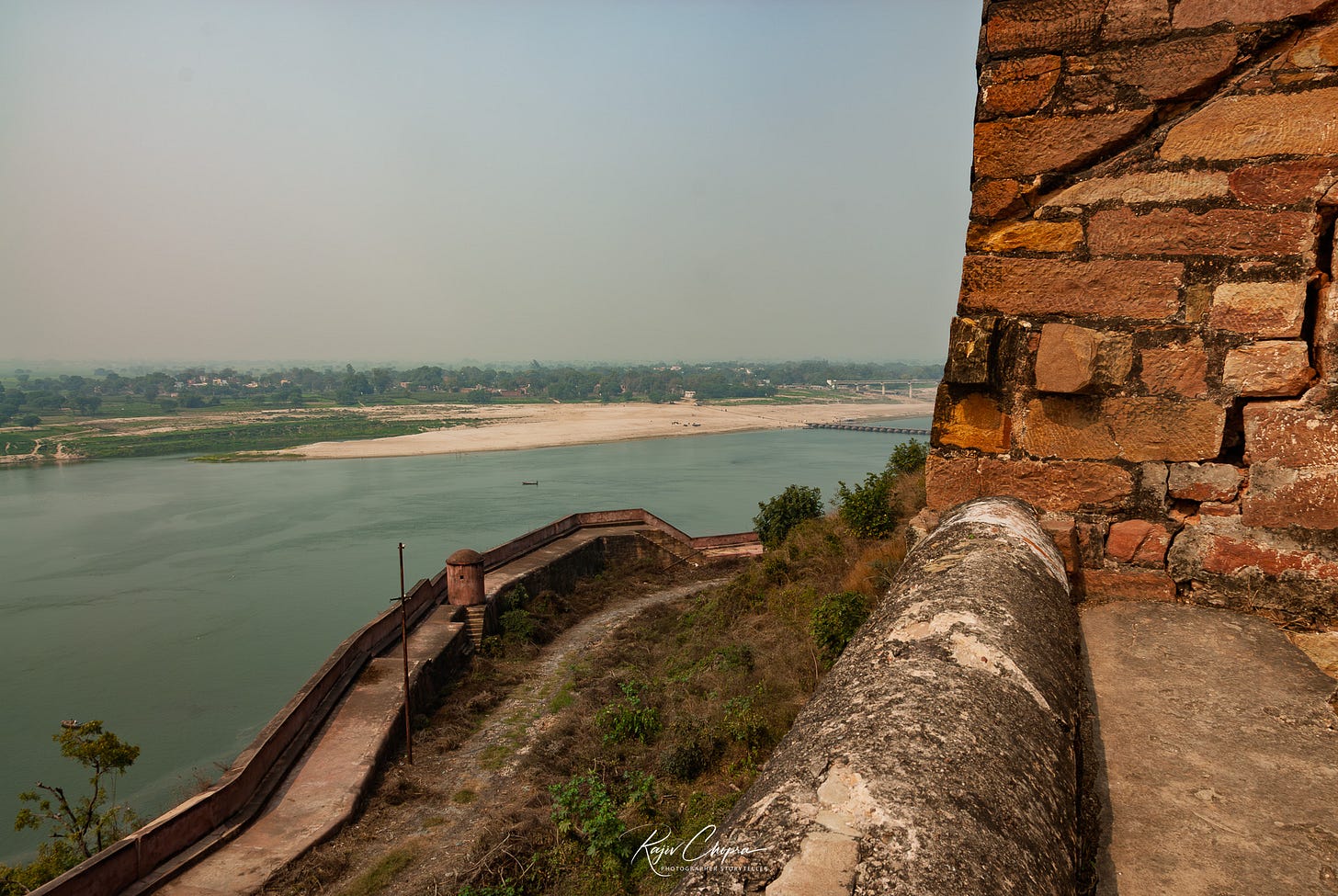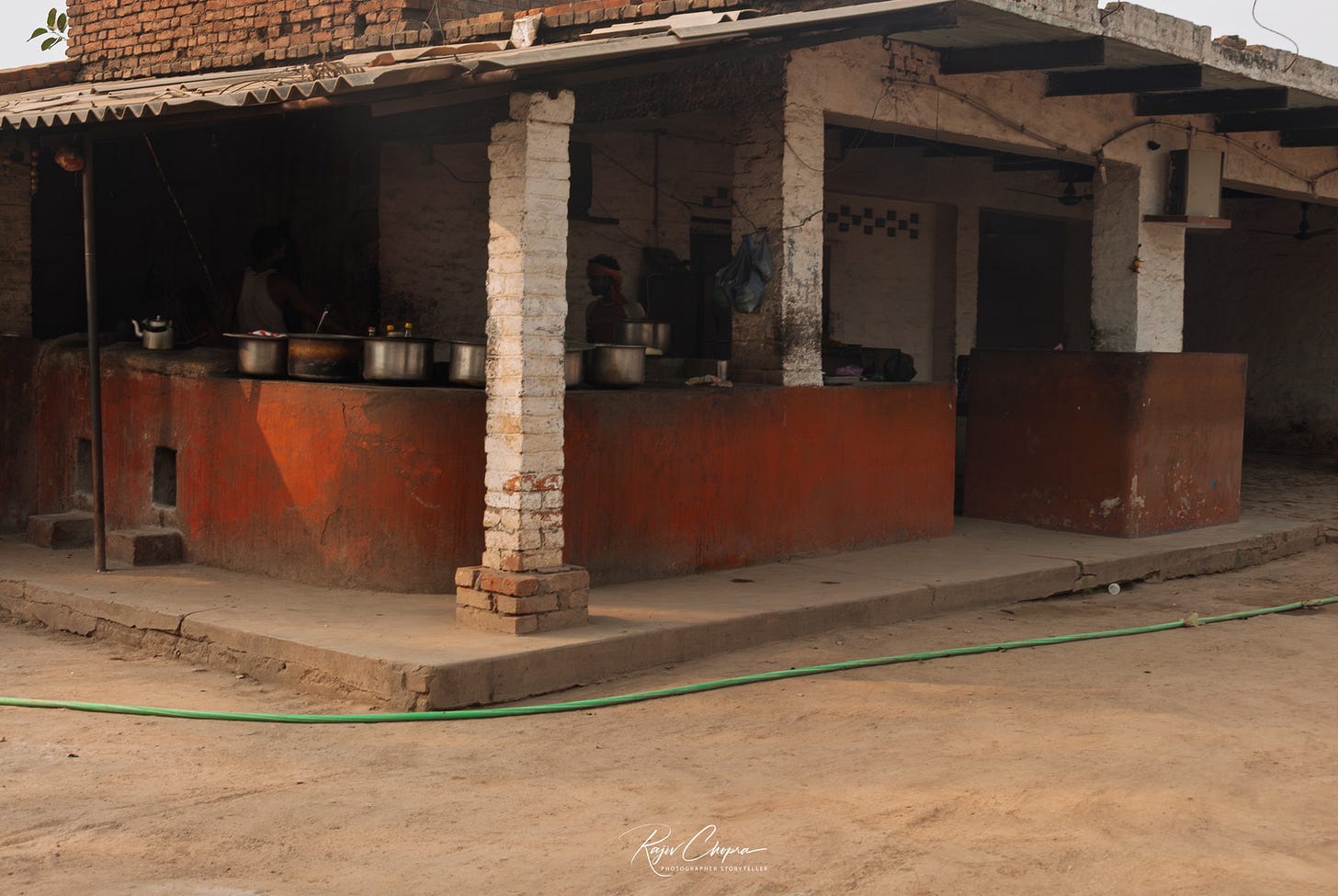My time at Chunar Fort with a jolly little urchin brings back splendid memories
The journey almost broke my back, but it also helped me discover many bones
I will split the visit into two posts.
I will split my visit to Chunar into two short posts, and will upload a Canva rectangular video or a video link in the second post. Let’s see what I finally end up doing.
I had not heard of Chunar Fort until just over a decade ago. During a solo trip to Benares, I decided to make a day trip to Chunar and drive straight to Mughal Sarai to catch my train back to Delhi.
A sarcastic diversion.
Our current, nationalistic, government has renamed Mughalsarai station after some RSS fellow – Deen Dayal Upadhyay or something. Almost no one outside the Hindutva brigade has heard of this man, and I have no intention of researching him.
The meaning of ‘sarai.’
When you change names, you change history. The word ‘sarai,’ in a North Indian context, particularly in Delhi, Uttar Pradesh, and Bihar, refers to a resting place for travelers, or even a depot for armies to restock and replenish their supplies. The word is of Hindustani-Persian origin, but I assume that the current government’s eyes turned red when they read the word, ‘Mughal.’
Many years ago, when only a few trains stopped at Benares, I’d catch a train to Mughalsarai, and then take an auto-rickshaw to Varanasi. The distance between the two towns is about twenty kilometers. For the curious, I’d like to point out that, apart from its train station, Mughalsarai has nothing to recommend itself to anyone.
I discovered many bones while driving.
I hired a taxi, and the driver and I set off on our bone-shattering journey to Chunar Fort. The highway resembled a strip of cheese after being mangled by a mouse, and short strips of perfect road gave us a brief respite from the road’s best attempts to reduce our bones to pulp. The brief respite never lasted more than one hundred meters, and I refused to believe the cab driver’s assertion that we were driving on a national highway that connected Benares to Kerala in South India.
The seventy-odd kilometers to Chunar were enough for me, and I vowed never to use that highway to drive between Varanasi and Chunar. We stopped at a dhaba for lunch. After I hobbled to my seat, I ordered black dal and roti and wondered if I was going to miss my train that night. My hope lay in the possibility of the train being late, and I am happy to report that the train did not disappoint me!
I’ve had many bouts of food poisoning while traveling in India’s deep interiors and have become an absolute coward. If I have even a 1% suspicion about the food, I stay vegetarian and often stick with black dal and roti.
I’d rather be safe and boring than adventurous and squatting in the fields while my stomach rumbles. There are times I am grateful my school had lots of squat toilets!
At Chunar Fort
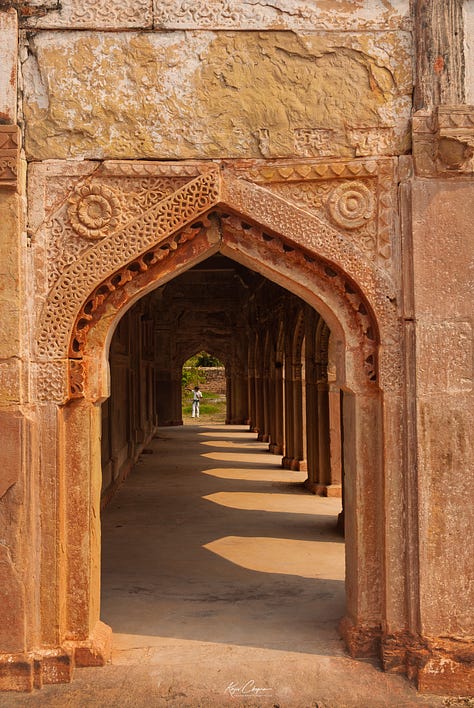
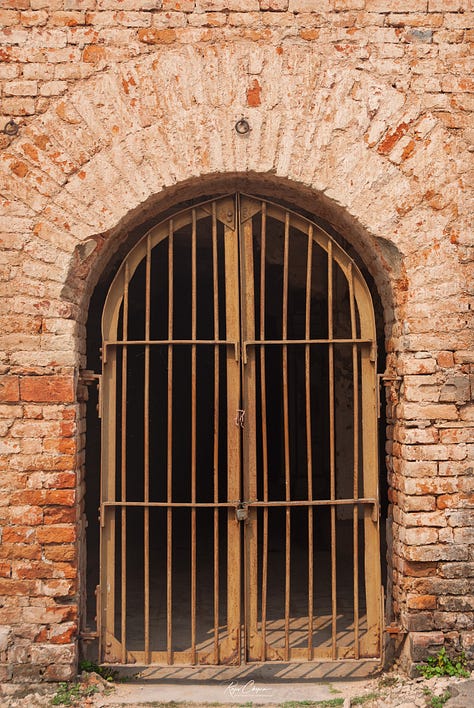
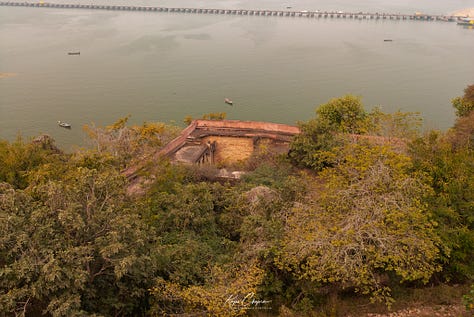
Chunar Fort lies on the banks of the Ganges River, and tucks itself into the river’s neat, graceful curve. An urchin caught me when I entered and promised to be my guide.
I figured the young lad was going to spin me a tale, and he did spin a great yarn!
First, he took me down to a dungeon (yes, it was a dungeon) that he insisted was the very dungeon where Sher Shah Suri imprisoned Humayun. A hole in the ceiling of the dungeon was the only source of light, and it was the point where the prisoner’s gaolers delivered food to the poor soul.
Please click this link and review my history of Chunar Fort. Sher Shah Suri did not imprison Humayun at Chunar. In fact, Humayun besieged the fort, and it seems the siege was a strategic error in their conflict.
I could not walk around the entire premises. Our police, army, and government love to arrogate portions of forts and palaces for their use, even as they denigrate those who walked before us.
Then, my young urchin took me to view the outer wall at the rear side of the fort, and pointed to a building that seemed to be a prison. The trees and greenery surrounded the building, and I wondered if the jailers intended to imprison a person between the beauty of the river and the serene calm of the greenery as an exquisite form of torture. While I allowed myself to sink into daydreams, my young friend rudely interrupted my reverie and stated that the building is where kings executed their prisoners.
Ah well, I thought. At least you die surrounded by a river and greenery, which is better than the state of India’s prisons today.
Then, we walked across to an actual prison – the barred doors clearly indicated that only prisoners filled the spaces behind the bars.
Where the royal women bathed. Ha! Ha!
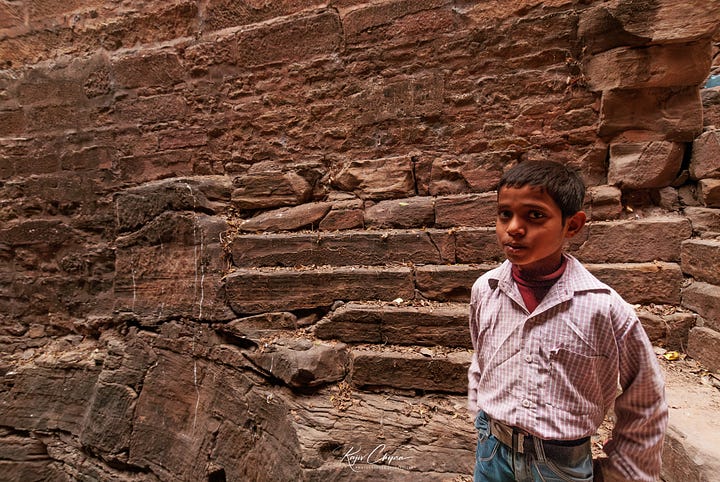
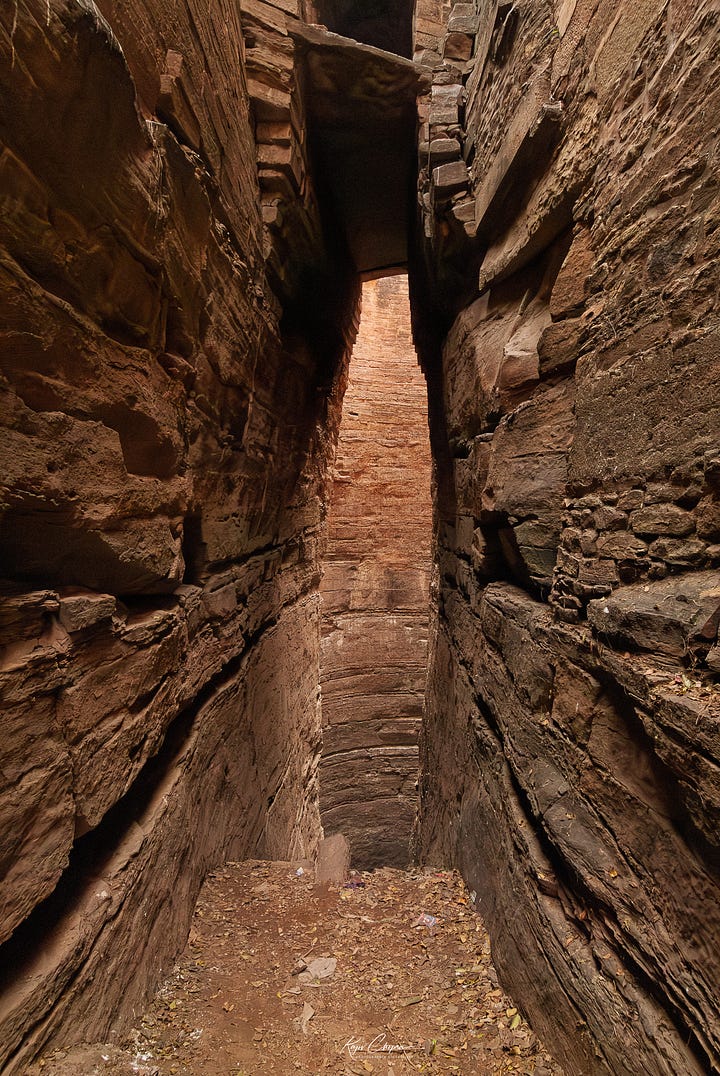
Time was getting on, and I was about to say goodbye when, with a malicious smile on his face, he invited me to explore the massive and deep well in the center of the main pavilion. The young urchin urged me to follow him to a section of the well where, he claimed, princesses and queens went for their daily baths.
I was skeptical and told him that it was inconceivable that royal women were going to strip naked and bathe in full view of the lascivious eyes of the men in the fort. With a serious look on his face and innocence filling his eyes, the young lad informed me that regulations barred men from approaching the well while the royal women bathed.
I guessed that the men contented themselves with pornographic visions of the women bathing in the waters. My young friend took me down to a narrow, oval opening (and, I doubt, tourists explore that section of the fort), where the royal women allegedly walked down for their bath.
The opening resembled the eye of Sauron in the moments when he allowed the ring of fire to die down. Close your eyes, and let your imagination run wild; you will see what I mean.
Visualize the Eye of Sauron, my friends!
The path down to the opening was slippery, with loose stones littered along the path. Even though I wore my beloved Timberland shoes, I slipped a few times and stopped short of the final opening: I had no intention of diving into the shallow, stinking waters of the well.
I am not Superman, and have no intention of trying to emulate that worthy, if boring, superhero’s ability to fly. Superman is boring, and Superman comics and movies put me to sleep.
I looked back, growled when I noticed the young urchin had stopped well before me. When I challenged him about the slippery conditions, he assured me that, in medieval times, the path was paved, comfortable, with proper railings!
My little urchin was a great storyteller!
I realized that the young fellow’s history knowledge was suspect, but it was only when I researched Chunar’s history that it struck me that his knowledge was close to zero. I doubt he passed his history exams in school.
Reflecting on this trip, a thought comes to mind: while his history knowledge was abysmal, the young urchin was a great storyteller. We tramped the grounds for a few hours and had a jolly good time together.
Present-day Indians are a prickly lot, puffed, pompous, overly serious, and quick to anger. We have thin skins and cannot abide a good yarn. I don’t know how the intervening years have treated the young lad, and if his elders have beaten the storytelling out of him.
I can imagine his wise, hoary elders wagging their fingers at him, admonishing him to be serious.
“Be serious, young boy, and look down when we talk to you. Study hard, get a job, and forget about this storytelling rubbish. If you don’t get a job and produce sons, who will look after us in our old age?”
I will consider it a travesty if he has lost his ability to spin a tale, laugh, joke, and be a merry companion. He may have been a lousy history student. Still, we had a jolly few hours together, and I believe that our ability to transcend our age and education ‘barriers’ and laugh together counts for something, especially in our troubled times.



